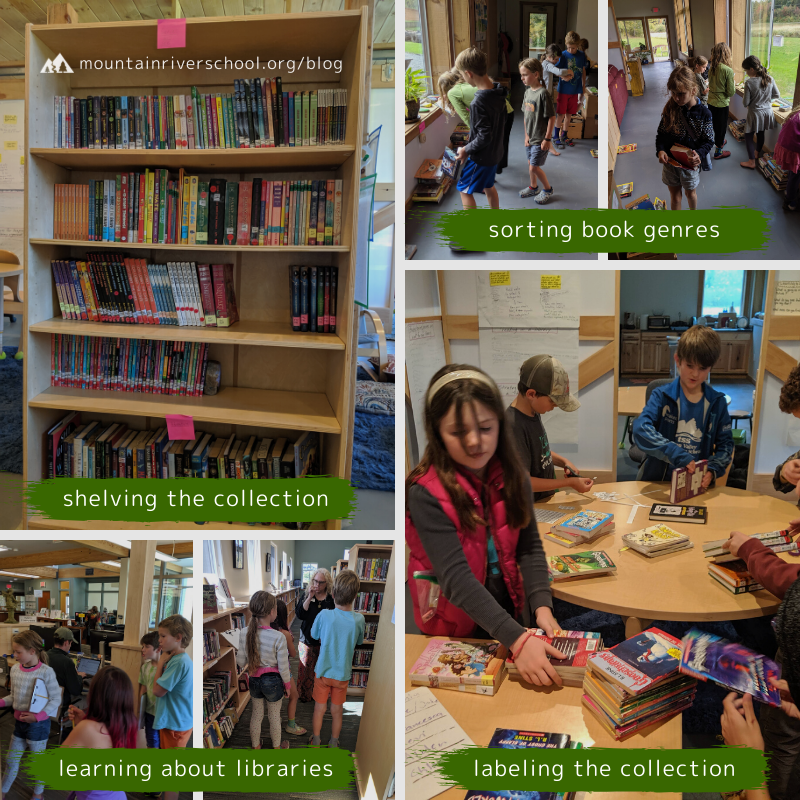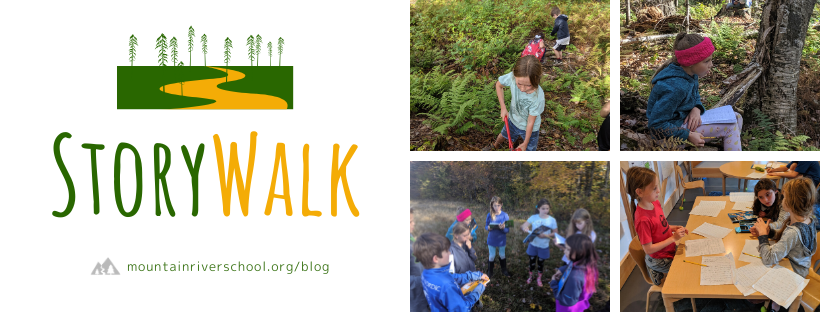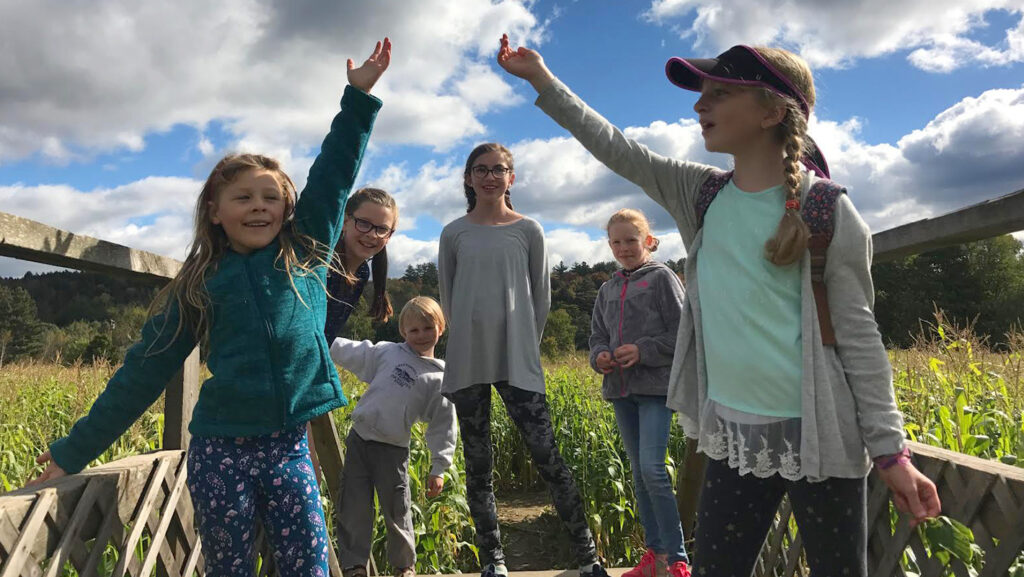When Place Network partner, Mountain River School, started the 19-20 school year on a brand new campus, the teachers and administrators didn’t just see it as a fresh start in a new building, but rather a giant opportunity to put students at the helm of designing and stewarding their own learning environments. Spaces within a school that are conventionally pre-designed, like the library and play yard, were instead left bare with an intention to immerse students in place-based education practices like design thinking, STEAM, community as a classroom and interdisciplinary approaches. The results? Bare spaces transformed into relevant, meaningful places where students are leading the charge.
We had a chance to learn more about these new places on Mountain River School’s campus and how students dove in place-based education and made them their own.
The Library
When it comes to designing, building and curating a library there’s a lot to consider, like:
-
-
- Sorting and organizing the books
- Selecting categories and creating a system for shelving
- Developing rules for checking the books out
- Designing book displays and reading areas
-
So when Mountain River 3rd-8th grade students were given the task at the beginning of the school year, they knew it was going to take research, discussion, teamwork and collaboration to get the job done well. To get the process started, students and teachers used the community as their classroom and visited the Waterbury Public Library. There they had the opportunity to take a tour of the facility, make notes, ask the librarians questions and brainstorm ideas for their work back in the classroom.

Following their visit to the library, students were grouped into three working committees: Organization, Protocol and Celebration. Committees were selected based on observations during the library visit, class discussions and prior knowledge. With the volunteer help of family members, students were ready to take on the tasks of sorting & organizing, creating systems and protocols and designing the look and feel of the space.
Mountain River teacher Matt Mitchell reflected that, “building a library [has] provided our Meadows (3rd-5th) and Forests (6th-8th) students with a novel opportunity to collaborate amongst themselves, to share their authentic knowledge and ideas, to communicate and gain consensus and to ultimately use their voices to influence their own learning environment.”
As of the end of October, the library was up and running and there has been a lot of excitement for reading as a result of spending so much time working with the entire book collection!
The Nature Path (and Story Walk)
Outdoor experiences have always been a shared value at Mountain River School, so when they moved into their new campus it was a no-brainer to blaze a new nature trail. Starting in early October, students began paving the way on the new property, diligently raking, trimming and marking the 30-45 minute trail. Not only that, students were also designing their own StoryWalk along the way.
What’s a StoryWalk? Traditionally, a StoryWalk involves laminating and posting individual pages from an age-appropriate book in intervals along a walking path. It’s intended to be a fun way for kids and families to get outside, take a walk, and enjoy reading a good story along the way.

Instead of keeping to tradition, Mountain River students were challenged to write and illustrate their own stories to post along the path. With each assigned a trail section to write about, students were prompted to write about something “fantastical, but rooted in some truth based on the immediate surroundings of their trail section.”
“I really liked the writing part because it was an opportunity to partner up; the editing process was fun. I also liked the seed storms for observing with my senses.” – Amelia, Meadows student
The Play Space
In May of last school year, teachers challenged students with the task of designing their dream playground. This mini lesson launched a place-based exploration of play with three essential questions driving the way:
-
-
- What is play?
- Why is it important?
- What do we learn from it?
-
Student ideas and designs were inspired by past experiences, imagination, natural materials and a collaborative mindset. This school year, teachers decided to build upon last year’s initial exploration of play, challenging 3rd-5th grade students to design an outdoor play space where the youngest members of their school community — Pre-K through 2nd grade — could play, explore and construct with natural materials.

To start, 3-5th grade students used the Design Thinking process to establish a general understanding of the challenge, engage in a class brainstorm and identify solutions. Next, students brought their ideas to life on paper through detailed concept drawings. With their refined concepts in hand, students made a presentation to Prek/Kindergarten educator, Amanda, who was able to share what she liked about the students’ designs and thought would work especially well for our youngest community members.
With their final design proposal in hand, students were ready to bring their concepts to life. They worked in groups to mark out play space areas with flagging tape. Their next task was to take measurements of the area and lay out their design on grid paper. Watching the delivery of some massive local logs — and marveling at the strength of the hydraulic arm that lifted them like toothpicks — was an exciting moment. As of now, the Play Space Project is just in its infancy. In fact, this is just Phase I. There are still supplies to be delivered, and work to be done. So, stay tuned!
Interested in submitting a project to be featured on our blog?


